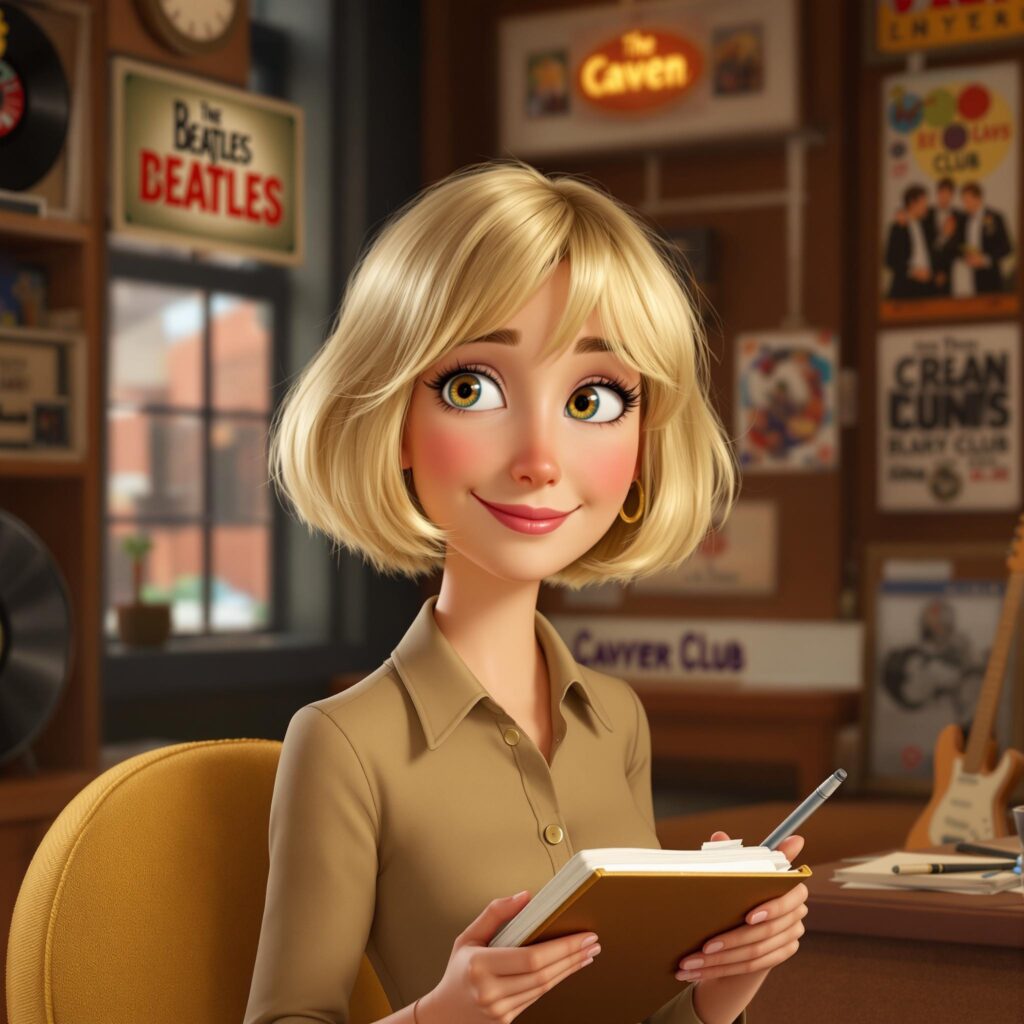Cynthia Lennon’s story is one of love, resilience, and quiet determination—a narrative that unfolds in the shadows of Beatlemania but is no less compelling than the music that defined a generation. As John Lennon’s first wife, Cynthia was present at the very inception of the Beatles, sharing in the struggles, triumphs, and heartbreaks that accompanied their meteoric rise. Her journey, often overlooked, is a testament to the strength required to stand beside a man destined to change the world.
Early Life and Meeting John Lennon
Born Cynthia Lillian Powell on September 10, 1939, in Blackpool, England, Cynthia grew up in the Wirral, just across the River Mersey from Liverpool. Raised in a modest, working-class family, Cynthia was a shy, artistic child who dreamed of a creative life. Her father’s death when she was just 17 left a profound mark, but she pressed on, pursuing her passion for art at Liverpool College of Art in 1957.
It was there, in a classroom filled with paint, sketches, and the energy of young creatives, that Cynthia met John Lennon. John was charismatic, rebellious, and magnetic—a stark contrast to Cynthia’s gentle, reserved nature. Despite their differences, they were drawn to each other, and a romance blossomed. Their relationship was a study in opposites: John’s wildness counterbalanced by Cynthia’s calm, his ambition grounded by her steadfast support.
Love, Marriage, and the Birth of Julian
As the Beatles began their ascent from Liverpool’s Cavern Club to the world stage, Cynthia and John’s relationship deepened. In 1962, Cynthia discovered she was pregnant. The couple married in a small, secret ceremony at the Mount Pleasant Register Office in Liverpool on August 23, 1962, just weeks before the Beatles’ first single, “Love Me Do,” was released.
Their son, Julian Lennon, was born in April 1963. The timing was bittersweet: as John’s fame exploded, Cynthia found herself raising a child largely alone, shielded from the public eye by Brian Epstein, the Beatles’ manager, who worried that news of John’s marriage and fatherhood might dampen the band’s appeal. Cynthia’s existence was, by necessity, kept in the background, her role as wife and mother hidden from the screaming fans and relentless press.
Life in the Eye of the Hurricane
The years that followed were a whirlwind. Cynthia watched as the Beatles conquered the world, their music transforming popular culture. She saw John evolve from a scrappy Liverpool art student into a global superstar, his life increasingly dominated by touring, recording, and the pressures of fame.
Cynthia’s own life was marked by both privilege and isolation. She lived in the comfort of homes like Kenwood, the Lennons’ estate in Weybridge, but often felt lonely and disconnected from John’s new world. The pressures of secrecy, John’s absences, and the temptations of fame strained their marriage. Cynthia coped by focusing on Julian, her art, and the small circle of friends who understood her unique position.
Despite the challenges, Cynthia remained devoted to John, supporting him through the highs and lows of Beatlemania. She witnessed the band’s creative breakthroughs, from the early days of “Please Please Me” to the experimental heights of “Sgt. Pepper’s Lonely Hearts Club Band.” She hosted parties, met celebrities, and traveled with the band when possible, always maintaining a sense of dignity and grace.
The End of an Era
By the late 1960s, cracks in the Lennon marriage began to show. John’s growing interest in avant-garde art, spiritual exploration, and—most significantly—his relationship with Yoko Ono created a rift that proved insurmountable. In 1968, after discovering John and Yoko together at Kenwood, Cynthia filed for divorce. The split was painful, public, and marked the end of Cynthia’s direct involvement in the Beatles’ story.
Despite the heartbreak, Cynthia handled the divorce with remarkable composure. She focused on raising Julian, ensuring he maintained a connection with his famous father. Cynthia’s resilience during this period is a testament to her inner strength—a quality often overshadowed by the tumult of her circumstances.
Life Beyond John Lennon
After her marriage to John ended, Cynthia rebuilt her life with determination and creativity. She remarried several times, lived in various countries, and continued to pursue her artistic passions. Her work as a painter and designer found new expression, and she became an advocate for Julian’s own musical career.
Cynthia also emerged as an author, publishing two memoirs—“A Twist of Lennon” (1978) and “John” (2005)—that offered a candid, heartfelt account of her life with John and the Beatles. Her writing is notable for its honesty, warmth, and refusal to sensationalize the past. Instead, Cynthia sought to present a balanced portrait of John Lennon: a genius, yes, but also a flawed, complex man.
Legacy and Reflection
Cynthia Lennon’s legacy is one of quiet courage and enduring love. She was the first to believe in John Lennon, supporting him before the world knew his name. Her experiences offer a unique window into the Beatles’ early years—the struggles, sacrifices, and joys that shaped the band’s history.
Cynthia’s influence can be felt in the music itself. Songs like “Norwegian Wood” and “Julia” (written for John’s mother, but also reflecting his relationships with the women in his life) bear the imprint of her presence. More importantly, her strength in the face of adversity set an example for Julian and for countless fans who saw in her story a reflection of their own hopes and challenges.
Cynthia passed away in 2015, but her memory endures—in her art, her writing, and the son she raised with love and devotion. She remains an essential, if often unsung, figure in the Beatles’ saga: the quiet force behind the band’s early days, whose resilience and grace helped shape the story of a generation.
